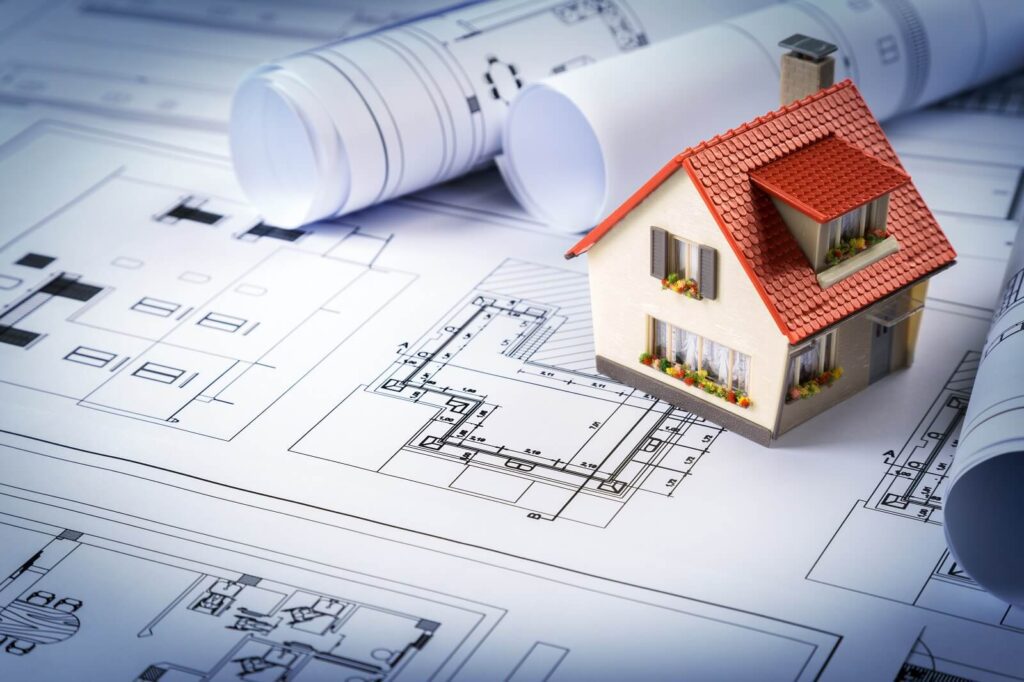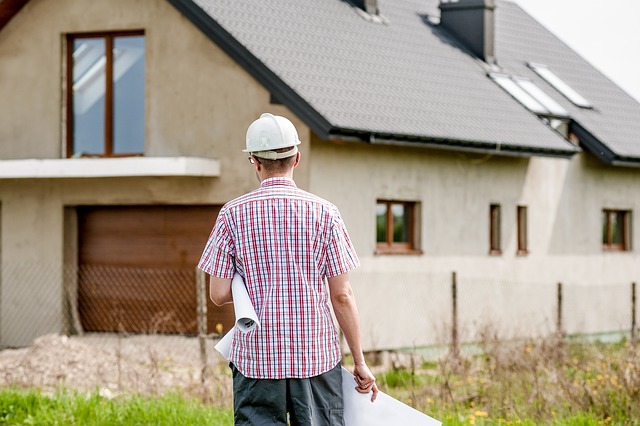When diving into the world of custom house remodeling materials, it’s crucial to consider factors like cost, maintenance, and overall design cohesion. This blog post will guide you through navigating these decisions with ease, ensuring that your dream home becomes a reality without breaking the bank or compromising on quality. Stay tuned for expert tips on selecting materials that align perfectly with your vision and budget.
Considerations for Choosing Home Building Materials
Durability and Longevity
One crucial aspect to consider is the durability of the materials. Opting for high-quality building materials ensures that your home will stand the test of time. For instance, selecting sturdy hardwood flooring over laminate can increase the longevity of your floors, saving you money on replacements in the long run. Durable roofing materials like metal or clay tiles can withstand harsh weather conditions better than traditional asphalt shingles.
Another factor related to durability is maintenance costs. While initial expenses may be higher when investing in quality materials, their longevity often offsets any additional costs incurred from frequent repairs or replacements. By prioritizing quality building materials, you are essentially making a long-term investment in your home’s structural integrity and overall value.
Pros:
- Increased lifespan of home components
- Reduced maintenance and repair costs over time
Cons:
- Higher upfront cost compared to lower-quality alternatives
Cost-effectiveness and Budget Considerations
Balancing cost-effectiveness with quality is essential when selecting materials for your home renovation project. While it’s tempting to opt for cheaper options initially, they may end up costing more due to frequent repairs or replacements down the line. Comparing prices between different material options and factoring in their durability can help you make an informed decision based on both short-term affordability and long-term savings.
Moreover, creating a detailed budget outlining material costs and installation expenses can prevent overspending during the remodeling process. Prioritize allocating funds towards critical areas like foundation work or structural upgrades while being mindful of where you can cut costs without compromising on quality.
- Research various material options’ price points.
- Create a comprehensive budget plan including all material and labor expenses.
- Seek advice from professionals regarding cost-effective yet durable choices.
Selecting Exterior Materials for Your Custom Home
Aesthetics and Compatibility
When selecting exterior materials for your custom home, consider how they complement the overall look you want. Think about the architectural style you aim to achieve; whether it’s modern, traditional, or rustic. For instance, if you desire a contemporary aesthetic, metal panels might be suitable. On the other hand, if a more classic appearance is preferred, wood siding could be an excellent choice.
Choosing materials that match your vision ensures a cohesive and visually appealing exterior. Imagine a sleek modern house with mismatched exterior material, disrupting its design harmony. By selecting materials that align with your desired aesthetics and architectural style compatibility, you create an inviting facade that reflects your taste and personality.
Weather Resistance and Durability
Considering weather resistance is crucial when picking exterior materials for your custom home. Different climates pose varying challenges; some regions experience heavy rainfall while others endure scorching heat or freezing temperatures. Opt for durable materials like fiber cement siding or brick that can withstand harsh weather conditions over time without deteriorating.
Moreover, durability plays a significant role in the longevity of your home’s exterior. Investing in high-quality materials may require a higher upfront cost but can save money on repairs and replacements in the long run. Prioritizing weather resistance ensures that your custom home remains structurally sound and visually appealing despite exposure to different climate elements.
Factors to Consider When Choosing Materials for Your Custom Home
Structural Integrity and Load-Bearing Capacity
When selecting materials for your custom house remodeling, it’s crucial to prioritize structural integrity and load-bearing capacity. These elements ensure that your home is sturdy and can support the weight of the building. For example, when choosing beams or columns, opt for materials like steel or reinforced concrete known for their strength.
Another aspect to consider is the foundation material. Concrete is a popular choice due to its durability and ability to withstand heavy loads over time. Evaluating the quality of wood used in framing is essential as it impacts the overall stability of your home.
Fire Resistance and Safety Features
In custom house remodeling projects, incorporating fire-resistant materials and safety features is paramount for protecting your home against potential hazards. Opting for fire-retardant insulation materials can help prevent fires from spreading quickly throughout the house.
Moreover, consider installing smoke detectors in key areas such as bedrooms and kitchens to provide early warnings in case of a fire emergency. Materials like gypsum board are commonly used on walls and ceilings due to their fire-resistant properties, adding an extra layer of protection to your custom home.
Insulation Properties for Energy Efficiency
When upgrading your home with a renovation project, focusing on insulation properties plays a vital role in enhancing energy efficiency. Proper insulation helps regulate indoor temperatures by minimizing heat loss during winter months while keeping cool air inside during summer.
Selecting materials with high R-values such as fiberglass or spray foam insulation can significantly reduce energy consumption by maintaining comfortable temperatures indoors without relying heavily on heating or cooling systems.
Commonly Used Building Materials for Custom Homes
Concrete and Masonry
Concrete and masonry materials are commonly used in building custom homes for their durability and strength. They are essential for creating sturdy foundations and walls that can withstand the test of time. Building materials like concrete blocks, bricks, and cement play a crucial role in ensuring the structural integrity of a home. For example, concrete is often used to lay solid foundations that provide stability to the entire structure.
Consider using concrete and masonry products where needed. These materials offer excellent support for your house’s foundation, ensuring long-lasting reliability.
Wood and Timber Products
Wood and timber products are popular choices in construction, especially for framing and flooring purposes in custom homes. From framing the structure of the house to adding warmth with wooden floors, these building materials bring a natural element to your living space. For instance, timber beams can be utilized not only structurally but also aesthetically to create a cozy atmosphere within your home.
Incorporating wood and timber into your custom home adds character while providing flexibility in design options due to their versatility as construction materials.
Metal Materials
Metal plays a significant role in custom home construction. Metals like steel or aluminum are known for their strength-to-weight ratio, making them ideal choices for supporting heavy loads on roofs or creating durable structural elements within a house. For example, metal roofing sheets offer longevity along with resistance against harsh weather conditions.
Consider utilizing metal building materials such as steel or aluminum when designing key components like roof structures or load-bearing elements in your custom-built residence.
Modern and Innovative Home Building Materials
Enhanced Strength-to-Weight Ratio
When planning your custom house remodeling, consider using composite materials known for their enhanced strength-to-weight ratio. These materials offer durability without adding unnecessary weight to the structure, ensuring longevity and stability. For example, fiberglass is a popular choice due to its high strength and lightweight properties, making it ideal for various construction applications.
Composite materials are a blend of two or more different components that work together to create a superior material with specific characteristics. By incorporating these advanced materials into your remodeling project, you can enjoy the benefits of increased structural integrity while reducing overall weight burdens on your home. This results in a sturdy and long-lasting renovation that stands the test of time.
Sustainable Building Materials
Opting for sustainable materials like bamboo or recycled plastics during your house remodel not only benefits the environment but also adds unique aesthetics to your home. Bamboo is rapidly renewable and offers exceptional strength, making it an eco-friendly alternative to traditional wood products. On the other hand, recycled plastics help reduce waste by repurposing existing materials into durable building components.
Integrating sustainable options into your remodeling project showcases a commitment to environmentally conscious practices while creating a modern and innovative living space. These choices not only contribute towards reducing carbon footprints but also inspire others in adopting greener building methods for future projects.
Smart Home Technologies Integration
Incorporating smart home technologies directly into building materials elevates the functionality and efficiency of your custom house remodel significantly. Features such as smart thermostats, lighting systems, security cameras, and automated blinds enhance convenience while optimizing energy usage within your home. Imagine controlling various aspects of your living space with just a tap on your smartphone or through voice commands!
Impact of Architectural Style on Material Selection
Traditional Styles
Traditional architectural styles often lean towards using natural stone or brick materials. These materials provide a classic and timeless look to homes, adding warmth and character. For instance, a colonial-style home might feature red brick exteriors or natural stone accents, creating an inviting and traditional aesthetic.
Choosing the right material for your custom house remodeling project involves considering the architectural style you are working with. If you have a traditional style home, opting for natural stone or brick can enhance its charm and elegance. These materials blend seamlessly with classic designs, offering durability and aesthetics in one package.
Contemporary Designs
On the other hand, contemporary designs embrace more modern elements such as glass, steel, or concrete. These materials are known for their sleek appearance and clean lines that define contemporary architecture. Picture large windows framed in steel, concrete countertops in the kitchen, or glass railings on balconies – these are common features in contemporary homes.
When renovating a modern-style house, selecting materials like glass, steel, or concrete can elevate its overall look while maintaining consistency with the design theme. The use of these industrial-inspired elements adds a touch of sophistication and minimalism to contemporary spaces.
Craftsman-Style Homes
Craftsman-style homes typically highlight wood accents and intricate details throughout their design. From exposed wooden beams to built-in cabinetry showcasing craftsmanship quality – wood plays a significant role in defining Craftsman architecture’s warm and inviting feel.
If your house follows the Craftsman style architecture principles, incorporating wood into your remodeling project is essential to staying true to its roots. Opting for wooden features like trim work, doors, cabinets, or even flooring can enhance the authenticity of your home’s design while bringing out its unique charm.
Importance of Energy Efficiency in Building Materials
High-Performance Insulation
Choosing the right materials for custom house remodeling is crucial for improving energy efficiency. High-performance insulation materials play a significant role in reducing heat loss and gain within your home. By selecting quality insulation, you can create a more comfortable indoor environment while lowering energy bills. For instance, using spray foam insulation or cellulose insulation can effectively regulate temperatures throughout the year.
Insulation helps maintain consistent temperatures inside your home by preventing heat from escaping during winter and keeping it out during summer. This results in reduced reliance on heating and cooling systems, leading to lower energy consumption overall.
Pros:
- Improved temperature regulation
- Lower energy costs
Cons:
- Initial investment might be higher than traditional insulation materials
Low-Emissivity Windows
Another essential aspect of energy-efficient building materials is installing low-emissivity (low-e) windows. These windows are designed to minimize heat transfer through glass panes, enhancing thermal performance within your home. Low-e windows help keep indoor spaces cooler in summer and warmer in winter by reflecting infrared light. Low-e windows provide better energy efficiency by reducing the workload on heating and cooling systems, resulting in decreased energy usage over time.
Key Information:
- Reflects infrared light
- Improves thermal performance
Energy-efficient appliances such as refrigerators, washers, dryers, dishwashers, and HVAC systems are vital components of an eco-friendly home design strategy that focuses on sustainability. By incorporating these appliances into your custom house remodel project, you can significantly reduce electricity consumption while enjoying modern conveniences.
- Choose ENERGY STAR certified appliances for optimal energy efficiency
Local Regulations and Guidelines for Material Selection
Building Codes Compliance
When selecting materials for custom house remodeling, it’s crucial to ensure compliance with local building codes. These regulations dictate the standards and specifications that materials must meet to guarantee structural integrity and safety. Failure to adhere could result in project delays or even legal consequences.
- Ensuring material compatibility with existing structures is essential.
- Quality guidelines are set to maintain the durability of construction elements.
Environmental Restrictions
Local regulations may impose restrictions on certain materials due to environmental concerns. For instance, some areas prohibit the use of specific substances like lead-based paints or asbestos-containing products. Understanding these limitations is vital when choosing materials for your remodel.
- Following environmental guidelines helps protect ecosystems.
- Opting for eco-friendly options can reduce your carbon footprint.
Historic Preservation Guidelines
In areas with historical significance, there are often strict guidelines regarding material selection for renovations or remodels. These guidelines aim to preserve the unique character and architectural integrity of historic buildings while ensuring any modifications blend seamlessly with the original design.
- Adhering to historic preservation guidelines maintains cultural heritage.
- Using authentic period-appropriate materials enhances the overall aesthetic appeal.
Planning and Researching for Home Renovation Materials
Assessing Existing Materials
Before starting a custom house remodeling project, it’s crucial to evaluate the current condition of your home’s materials. Check for any damages or wear and tear that might require replacements. By identifying areas needing attention, you can prioritize where to focus your efforts.
Assessing existing materials helps in understanding what needs improvement during the renovation process. For instance, if you notice that the flooring is worn out or outdated, you may consider options like hardwood, laminate, or tiles as replacements.
Exploring Material Options
Research plays a vital role in selecting the right materials for your home renovation project. Utilize online resources to explore different material options available in the market. Visit showrooms to see and feel various materials firsthand before making a decision.
Exploring material options allows you to compare features such as durability, aesthetics, and cost-effectiveness. For example, when choosing kitchen countertops, researching materials like granite, quartz, or marble can help determine which best suits your design preferences and budget constraints.
Consulting with Professionals
Consulting with professionals such as contractors or interior designers can provide valuable insights into selecting suitable renovation materials for your home. These experts have experience working on similar projects and can recommend high-quality products based on your specific requirements.
Professionals can guide you through the construction process by suggesting reputable suppliers for quality materials at competitive prices. When discussing your home renovation, share details about your preferred design style and budget so they can tailor recommendations accordingly.
Conclusion
You’ve now got the lowdown on selecting the right materials for your custom house remodeling. From considering architectural styles to energy efficiency, you’re equipped to make informed choices. Remember, it’s not just about aesthetics; functionality and durability play crucial roles too. So, when you’re diving into your renovation project, think about how each material aligns with your vision and needs.
Now that you’re armed with this knowledge, go forth and create the home of your dreams, one brick (or beam) at a time! Your choices shape not just the look but also the feel of your space. Make it a reflection of who you are and what matters most to you. Happy remodeling!
Elevate Your Dream Home With Custom House Remodeling Planning By Red White & Blue Construction!
Considering a custom house remodeling project in Lafayette, CA? Red White & Blue Construction is your go-to expert for meticulous pre-remodeling planning services! Specializing in crafting the perfect foundation for successful house remodeling projects, we customize our pre-remodeling strategies to align with your unique vision and requirements. Known for our deep expertise in pre-remodeling planning, we are dedicated to ensuring your dream home becomes a reality, with every detail planned and prepared to meet your expectations. Our esteemed reputation throughout the Bay Area is a testament to our commitment to precision, quality, and the exceptional standards we maintain in every planning stage.
At Red White & Blue Construction, we do more than just lay the groundwork; we pave the way for your remodeling project’s triumph. With our thorough planning, transparent pricing, and outstanding client service, embarking on a custom house remodeling project with us means setting the stage for a smooth, efficient transformation. Opt for Red White & Blue Construction for your pre-remodeling planning needs and start your journey to your dream home with confidence. Contact us today to begin!
Disclaimer
The materials available on this website are for informational and entertainment purposes only and not to provide advice. You should obtain advice concerning any particular issue or problem from a professional. You should not act or refrain from acting based on any content included in this site without seeking legal or other professional advice. The information presented on this website may not reflect the most current building developments. No action should be taken in reliance on the information on this website. We disclaim all liability concerning actions taken or not taken based on any or all of the contents of this site to the fullest extent permitted by law.





